Organizational Structure
Larger Numbers of Troops Mean Increased Authenticity – Not To Mention A Good Deal Of Fun
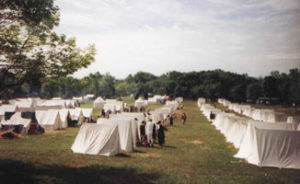
Continental Line camp by getting together only a few times each year, The Continental Line encourages large turnouts for its events. As a result, living historians and the public alike can gain a better feel and understanding of the battle structure and tactics. As described in Organizational Structure of The Continental Line (While In The Field), “Von Steuben specified in his 1779 regulations that a platoon was to consist of a minimum of 20 men and a battalion 160, or 8 platoons to a battalion.” In order to ensure these numbers, several individual Continental Line units often fall out together as one group under one command.
Amalgamating regularly has benefits beyond authenticity on the battlefield. The resulting increased interactivity between Line units in camp, be it a pick up game of Hurley, a trip to the sutlers, or telling stories around the campfire, means aquaintances from the battlefield can quickly turn into long-lasting friendships.
Flexible Command Structure Helps To Keep Events Exciting
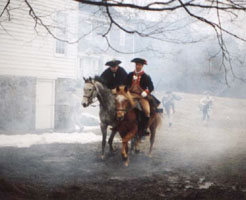 CommandersWith a command hierarchy that changes at each event, new officers are constantly being groomed, while veteran commanders often entertain the challenge of incorporating new tactics and battle scenarios into the events. As a result, Line events feature exciting and entertaining battle movements for both the public and the living historians alike.
CommandersWith a command hierarchy that changes at each event, new officers are constantly being groomed, while veteran commanders often entertain the challenge of incorporating new tactics and battle scenarios into the events. As a result, Line events feature exciting and entertaining battle movements for both the public and the living historians alike.
“Self-Policing” Atmosphere Fosters Growth And Research
Continental Line units take pride in properly representing and respecting the original units they portray. By encouraging members to self-police their unit for authenticity, the Line recognizes this and holds the units accountable for their portrayals.
Camp LifeWith this “unwritten rule” clearly understood and followed, the Line does not dwell on rules and written standards. Member Units sponsor new Line units and help them achieve and, at times, surpass the level of authenticity already established within the Line. This method encourages research by all units within the Line – and for any new findings to be quickly implemented into the activites or physical appearance of the Line.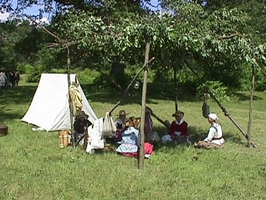
Additionally, a committee of historians is available to work with units to document procedures, to authenticate uniforms and accoutrements, as well as help to encourage authenticity through education in the form of articles for the newsletter, open discussions at events, and working with the public.
A Strong Commitment To Safety Ensures The Future Of The Hobby
Continental LineOne of the few requirements of Member Units in the Continental Line is a strict adherence to The Safety Standards and Guide to Black Powder, a set of basic safety rules drawn from national and state guidelines and compiled specifically for the Line.
Since the Continental Line only covers the American forces during the war, Line events are often co-sponsored by The British Brigade, a like-minded umbrella group that encompasses units representating our opposition. Because the Line and The British Brigade already have an established relationship, battle scenarios are smoothly executed, and all safety measures are consistent.
The Continental Line has no rule forbidding anyone from participating in the role of a soldier, regardless of race, creed, color, or gender.
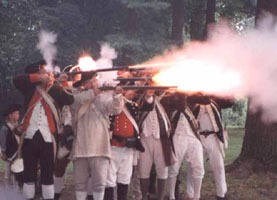
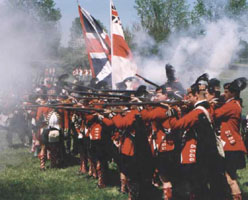
Remember the Ladies…
“…and be more generous and favourable to them than your ancestors. Do not put such unlimited power into the hands of the Husbands. Remember all men would be tyrants if they could. If perticular care and attention is not paid to the Laidies we are determined to foment a Rebellion, an will not hold ourselves bound by any laws in which we have no voice, or Representation.” – Abigail Adams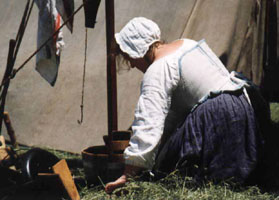
Campfollowers: As campfollowers, Officers’ and Soldiers’ wives, or civilian ladies from the local area, women played a difficult and important role in the Army camps of the period. Today, many living historians re-create these women by performing various chores around camp and tending to their children, as well as demonstrating 18th Century cooking and crafts. Activites specifically designed for the women such as teas, fashion shows, and games, are often included on event schedules.